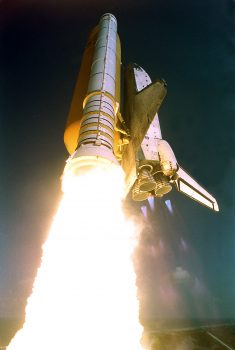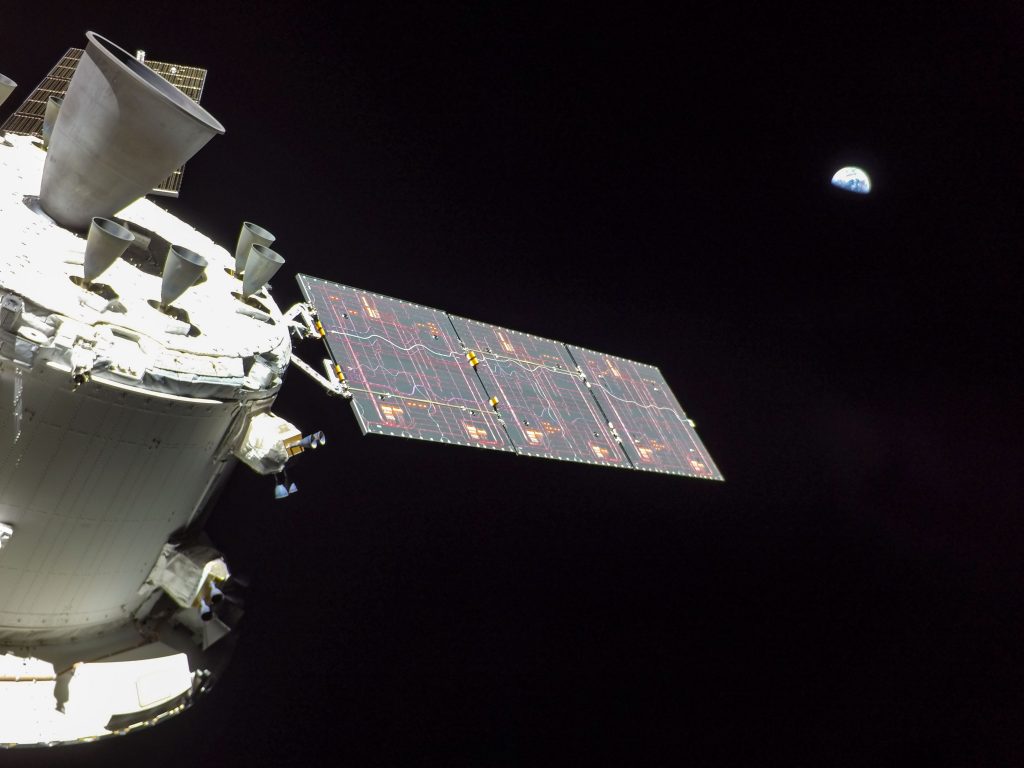Orion left distant lunar orbit at 22:53 CET (21:53 GMT) on 1 December and is on its return journey home. The spacecraft completed the distant retrograde departure burn, firing the European Service Module’s main engine for 105 seconds to set the spacecraft on course for a close lunar flyby as it returns to Earth.


“It was a good burn. Very smooth” comments ESA’s propulsion engineer for the European Service Module Tobias Langener. The burn changed Orion’s velocity by about 138 m/s using the orbital maneuvering system engine modified for the European Service Module and built by Aerojet Rocketdyne. The engine can provide 25.7 kN of thrust, enough to lift a van on Earth. The engine flying on Artemis I has already been in space 19 times on Space Shuttle flights, starting with the STS-41G mission in October 1984 and ending with STS-112 in October 2002.
This burn is the penultimate large thruster firing before Orion’s splashdown in the Pacific Ocean on 11 December. The last large burn will occur on 5 December as the spacecraft flies less than 130 km from the lunar surface and uses the Moon’s gravity to help propel Orion back to Earth.

Teams also continued thermal tests of the star trackers during their eighth and final planned test. Star trackers are a navigation tool that measure the positions of stars to help the spacecraft determine its orientation. In the first three flight days of the mission, engineers evaluated initial data to understand star tracker readings correlated to thruster firings.
A small trajectory correction burn was completed at 02:35 CET (03:35 GMT) on 2 December, flight day 17 with Orion’s auxiliary thrusters fine-tuning the spacecraft’s path.
Just after 23:30 CET (22:30 GMT) on 1 December Orion was traveling 382 380 km from Earth and 85 134 km from the Moon, cruising at 1429 km/h.

 Automated Transfer Vehicle page
Automated Transfer Vehicle page ATV blog archive
ATV blog archive
Discussion: no comments